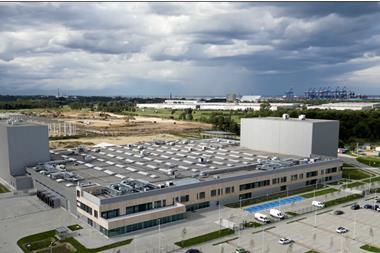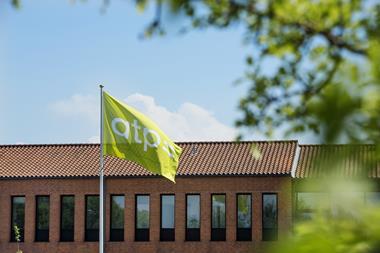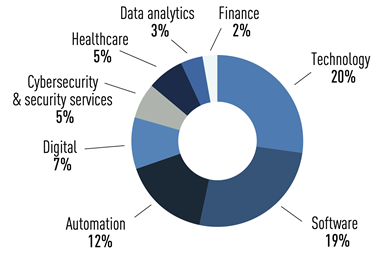Is China private equity beginning to fulfil its promise after more than a decade of being plagued by adverse investment conditions and underperforming investment managers? Better returns, rational deal pricing and innovative debt financing are distinctively positive signs. But, chronic problems such as GPs’ inadequate skills, and lack of survivability are only slowing improving. The success and failure of private equity managers and their asset class ultimately depend on key factors that must improve.
Private equity fundraisings in China dropped 78% from $15bn in Q3 of 2011 versus $3.3bn in Q3 of 2012, according to Asian Venture Capital Journal. This was a greater fall than pan-Asian fundraisings, which fell 45% to $10.8bn during the same period. The dramatic reduction in the number of Asian funds trying to raise capital: 67 to 33 from the second to third quarter of 2012 indicates weaker GPs are being left out of the business. But is this a sign of industry rationalization or simply reduced interest by LPs?
Investors favour Asia
Juan Delgado-Moreira, MD and Head of International at Hamilton Lane is optimistic about the business at this point of the market and development. “In the long run, the pool of international PE allocation for Asia is growing and fundamentally driven by demands for global yield while Asia is a favourable area.”
Delgado-Moreira’s observes that “between 2000 and 2005, returns were less than 2.0 times (with very few exceptions)” is reliably agreed upon by many other professionals. He concludes: “This return was mediocre when compared to US returns, which were especially strong from 2001 to 2002. Then from 2005 to 2012, stronger vintages from 2005 yielded 2.5 times and above resulting in a mid-20% return.”
His analysis of why returns were so poor in China in those early years, despite booming investment opportunities, provides a critical lesson for GPs. “China didn’t deliver a risk premium, from 2000 to 2005. Now it delivers this premium after the financial crisis, which didn’t affect China. A misperception of risk by the GPs led to a fundamental mismatch between deal structures. What were really vencap investments were mistakenly treated as large cap deals. The question now is where will China PE returns head in the future?”
He advises GPs exercise discipline in the current market. “Presently, trade sales and equity markets are difficult. In Asia, an incorrectly timed investment entry point is costly because sharp stock market movements can bury your returns into the next cycle.”
An over dependence by China PE managers on pre-IPO investing also spawned its own unique problems. The easy access to cheap loans distorted asset pricing and left the wreckage of ill conceived investments that missed an IPO. Moreover, it encouraged poorly run GPs to ignore the development collegial investment culture, risk management and business competence.
Characteristics of China PE
Paul Su, Senior Partner and Head of Greater China, 3i, stated: “Pre-IPO investing still characterises much of China private equity, but this is changing as both investment management and companies mature. For example, domestic Chinese PE firms like Hony Capital are expanding their expertise by doing more cross border deals.”
Su places the situation in context: “Before 2000, China PE did not really exist when compared to the number, size and quality of today’s participants. In fact PE was once considered by business people to be an expensive and troublesome loan where the GPs added little value. Even today, PRC companies share mixed feelings about private equity.”
Today, Su can clearly see the results of China’s PE feeding frenzy. “Some manufacturers were hurt after the 2008 financial crisis when they improperly entered private equity on their own. Easy money was made borrowing cheaply from banks and lending to weaker companies.”
Bonnie Lo, Partner of NewQuest Capital Partners, represents the only Asian fund specialising in direct secondary, PE investments. Although the secondary market is a well developed in the US, it is relatively new in this region. Theoretically, Lo and her colleagues should benefit from the opportunity to find value from earlier China investments. She says: “On average, the secondary investments that we are examining are four to five years old. They represent a big range of quality. Deal quality is all over the map.”
She describes a sprawling, untapped market. “There is about $260bn of private equity investments made between 2006 and 2011 made in Asia. Only $60bn of principal investment has been exited. Over 5000 investments across Asia have not been exited.”
From the viewpoint of the secondary buyer, Lo explains: “One reason for many investment failures is that there is too much focus on racing towards an IPO in the China market. In the US, for example, an IPO is not necessarily the next step for a private equity owned company.”
Poorly managed
Perhaps one of the biggest reasons for mediocre and inconsistent returns in China private equity lies in incompetent and poorly managed GPs. For example, recent studies on the poor post listing performance of Chinese companies with PE involvement reveal disappointing results. And more importantly, controversial allegations of fraud and gross mismanagement at Chinese companies with ownership by leading PE funds imply that many GPs are simply unable to make a difference in China in crucial areas like corporate governance and management policies. For LPs understanding the reasons behind this underperformance is critical for deciding how to choose a future GP.
Examining one particularly difficult period, according to the Asia Private Equity Review, for the 18 months ending in June 2011, there were 41 Chinese listings on the NYSE or NASDAQ with private equity participation. Eighteen of their share prices had declined as much as 50% and 10 of them declined by greater than 50%. The range of stock price performance is dramatic. Compare this with the US or UK where PE-backed IPOs usually outperform the market by as much as 20% during the first 12 to 18 months after listing. Strong direction from PE firms also result in higher quality and better incentivised management teams, improved sales and product development. Moreover, they are also largely free from the corporate governance and accounting scandals and irregularities that trouble PE backed Chinese firms.
Perhaps the blame lies in inadequate due diligence. Delgado-Moreira says: “In developed markets, due diligence is treated as a commodity that can even be subcontracted out to numerous advisors. But, in emerging markets, due diligence is a valuable and important institutional function.”
A selection of controversies involving PE-backed Chinese companies shows that private equity can’t be doing as well in China as investors hope. In May 2011, China Agritech Inc., who is backed by the Carlyle Group was summarily delisted from NASDAQ after being suspended from trading for over two months. PE- backed companies on NASDAQ, especially ones with a top-tier investor like Carlyle, rarely suffer a delisting.
The sensational allegations of the Muddy Water’s research report behind Sino-Forest’s price collapse were so profound that it created a cottage industry for shorting overseas listed Chinese stocks. The controversial report and subsequent sell off of Sino-Forest stock not only represented speculation about mismanagement and fraud, but raised serious questions about the due diligence, judgement and operational capabilities of the foreign private equity managers who were involved; in this case Sino-Forest’s PE backers were Simon Murray and his GEMs fund, both of who claim substantial investment experience in Asia. “Harvard educated, Chinese analysts based in New York usually have little more in common with Chinese company managers than you do,” says the research firm Muddy Waters.
3i’s Su warns: “Whether or not an investor holds a minority or majority stake, it is more important to maintain and build a practical and positive working relationship. For example, in China it is difficult to remove a chairman and CEO because of their complex and vital web of relationships with suppliers, customers and government officials.”
Core competency
Creative, disciplined and competent investment managers are as elusive as blockbuster movies or great art because of the unpredictability of collective human behaviour. But, yet, they are critical and irreplaceable elements in consistently making successful investments. Are Asian GPs making any progress in cultivating long term investment partnerships?
Delgado-Moreira knows the kinds of skills he wants to see in Asian GPs. “A balance between investment banking and industry skills- a core competency and industry focus are important. Our experience shows that specialist GPs last the longest and make the best returns.”
The inability for a sustainable core competency and sector expertise to develop among Asian GPs possibly explains many funds’ dependency on IPOs to generate returns. He adds: “Too much Asian PE is macro driven, without a focus on micro, industry drivers. A balance between skills in banking and organically growing investments through industry skills is critical for a GP’s long term success.”
Asian GPs are also failing to attract top recruits because of their reputation for an inequitable distribution of carried interest and poor management. Prospective employees worry if a GP is plagued by a non-transparent, autocratic investment decision making process and short term, deal churning mentality, all of which can destroy the value of carried interest. 3i’s Su warns: “Getting into a deal is the key focus for managers who are former investment bankers. But in China private equity, that is just the beginning of the investment.”
Delgado-Moreira agrees that China PE professionals rotate among GPs and out of the industry far too often. However, Hamilton-Lane’s global experience shows that this is not a new phenomenon. “Local managers have experienced problems with establishing lasting GPs since the industry started. The various sources of these problems: lack of success, bad investments and geographical obstacles that work against a portfolio management are not unlike the challenges faced by European private equity funds. So they can be overcome through experience. GP survivability will improve as the hiring market settles and professional development improves.”
However, many young bankers have also concluded the risk of foregoing a higher salary scheme to seek a carried interest payout through a China PE career cannot even match the short term benefits of a lucrative annual bonus found in other financial areas. 3i’s Su also observes the keen competition from other financial services. “It’s quite a career risk to devote 3 to 5 years to a young GP and face the risk of no returns for a variety of reasons inside and outside your control. That is why China has a shortage of private equity professionals.”
Long term trends
Emerging long term trends that will benefit China PE are taking root. One change represents the increasing number of opportunities that are underpinned by the creation of intellectual property rather than being dependent on low cost labour manufacturing. 3i’s Su believes: “Part of this trend is caused by a generational change in government leaders who are younger (aged 30 to 50), more westernised and understand the need to evolve China’s economy by reforming government and state owned enterprises.”
New products like the rapid development of a debt financing market for private equity are a critical building block. Su says: “High yield, acquisition and buyout financing is now available from major PRC banks based in Hong Kong and New York, such as Bank of China International, Construction Bank and ICBC.”
This was likely instigated by mainland Chinese companies listed on foreign exchanges, such as Focus Media, that recently suffered from depressed share prices and required a new financing round. Su feels that “previously, many investors thought debt financing for the buyout of PRC companies was unavailable. The buyout of ‘Focus Media’ by a group of private equity funds demonstrates that Chinese company owners can become as comfortable with going private as much as going public.”
The growing ambitions, knowledge and experience base of Asian LPs is also a source of positive PE evolution. Delgado-Moreira believes: “Asian LPs are very sophisticated in their global outlook. They may make one-third of their private equity allocation to domestic managers; this is not unlike their US counterparts. But, Asian LPs are more interested in international private equity and they seek the best in class managers so there is much US focus. They are more interested in Europe than US LPs. Plus, Asian institutions have displayed a broad interest in the private equity spectrum: venture capital, buyouts, growth and expansion capital.”
3i’s Su advises: “LPs with a China presence possess a more complete understanding of the investment opportunities and challenges than outsiders. Well informed LPs are more likely to make investments in China funds.”
The increasing significance of the RMB will play a dominant role in China PE, Su adds. “The liquidity of the RMB generated by insurance companies and national social security funds will increasingly play a large role in domestic private equity. These institutions will grow and their investment allocations will compel them to enter private equity.”












No comments yet